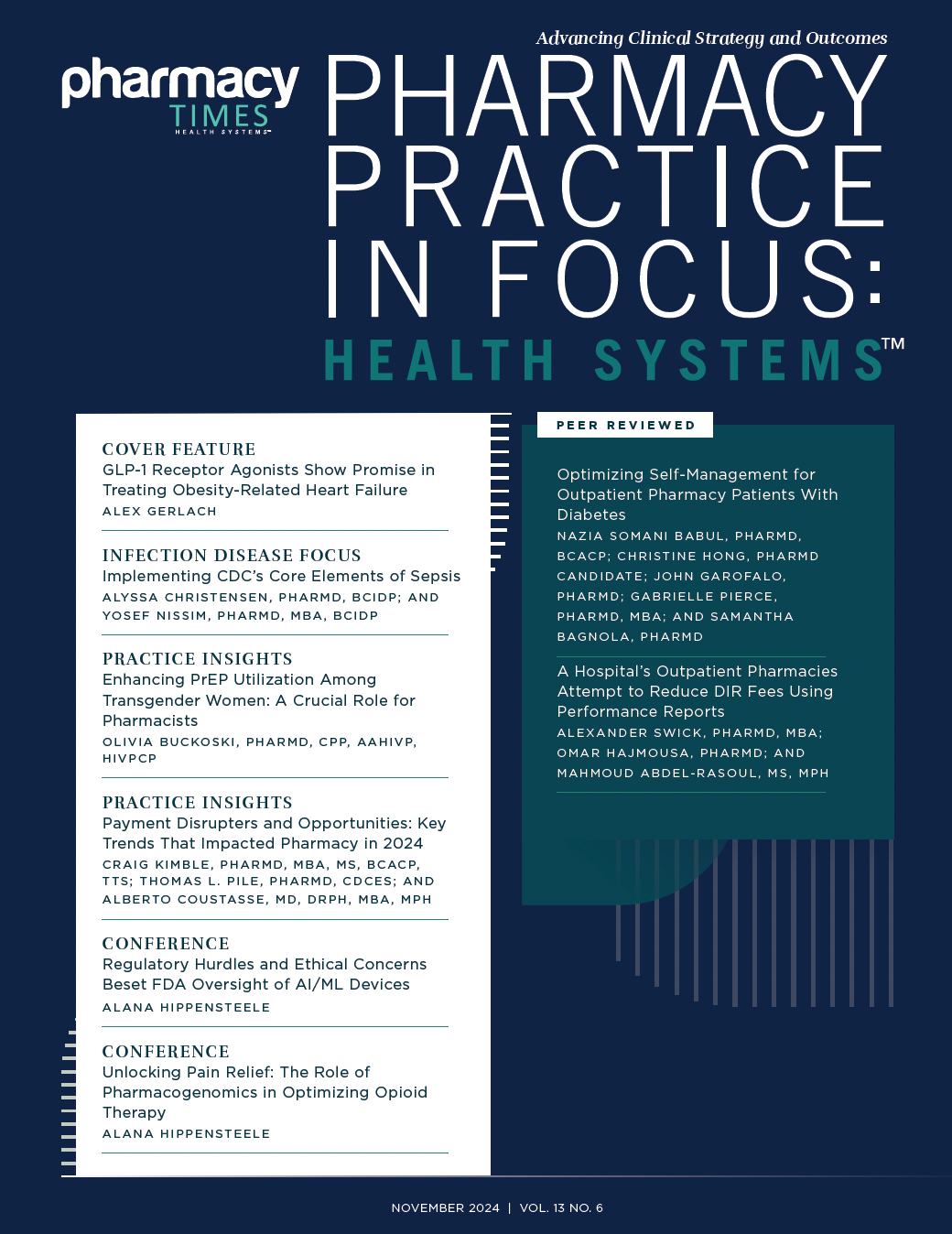About the Editor
Curtis E. Haas, PharmD, FCCP, is chief pharmacy officer for the University of Rochester Medical Center in New York.
Publication
Article
Pharmacy Practice in Focus: Health Systems
Author(s):
Image credit: Diego Cervo | stock.adobe.com

Curtis E. Haas, PharmD, FCCP, is chief pharmacy officer for the University of Rochester Medical Center in New York.
As I am sitting at my computer drafting this commentary, it is the end of National Pharmacy Week, and we are in the midst of a serious shortage of sterile intravenous (IV) and irrigation fluids. Pharmacy Week is always a great time each year to reflect on and celebrate all the great things that health system pharmacists, pharmacy technicians, and support staff accomplish every week of the year, but this year it has been particularly evident to me because we had to contribute in so many ways to the management of this fluid crisis. Managing shortages of drugs has become so second nature in pharmacy over the past decade that we do it as part of our daily routine without an awful lot of fanfare. What was once crisis-like and newsworthy is now mundane and rarely even warrants communication outside the pharmacy beyond an embedded message in the electronic medical record.
At the end of September, Hurricane Helene took out the largest sterile fluid production plant in the US in western North Carolina, triggering the most severe shortage of sterile fluids to date. While Baxter International, the federal government, and other manufacturers reacted quickly to attempt to mobilize alternative sources of fluids, it quickly became apparent that there is no practical way to fill the size of the void created. The majority of health systems in the US have been affected, and all have rapidly implemented creative strategies to conserve sterile fluids in ways that do not threaten the quality of care provided to our most critically ill patients. This has taken the contribution of every single clinical and ancillary department in the health system to work collaboratively to keep essential services available. In my experience, the level of collaboration and effort across the organization has been truly outstanding, and the changes required have been implemented in record time.
Many factors have contributed to the severity of this crisis. First, sterile fluids are used in every facet of care we provide, from simple ambulatory procedures to more complex and involved procedures in the management of critically ill patients. The operating suites, cardiac catheterization labs, gastrointestinal suites, procedure rooms, emergency departments, critical care units, and general patient care units are all examples of areas that run based on a consistent supply of sterile fluids for both IV and irrigation use. Of course, pharmacy relies on fluids for the preparation of parenteral drugs and nutrition. Our dependence on these fluids is so widespread and ingrained that we normally don’t think about them much, until, of course, we can’t get them. When a shortage occurs, we are faced with the fact that there are very few alternatives available.
Secondly, storage containers for sterile fluids are big, bulky, and heavy, so most clinical areas operate on a just-in-time inventory model with very little reserve stored or warehoused at the hospital or health system level. This is also the case for the manufacturers and distributors, where very little reserve inventory is stored. So when there is a major disruption to production, it is quickly felt at the customer end of the supply chain, leaving little time to react.
So why did the national sterile fluid shortage increase my appreciation for the excellence of health system pharmacy? As at many organizations, materials management staff and individual patient care areas manage sterile fluids (especially the large-volume fluids that are most affected by this shortage) at my health system. It became readily evident in the first several days that this shortage was essentially an intersection of supply chain logistics and clinical care that was going to profoundly affect every department and clinical service across the system. Based upon years of pharmacy team members managing this intersection of necessary skills, we were particularly well positioned to organize the relevant stakeholders and contribute to the assessment of alternative fluid and nonfluid strategies from both a clinical and logistics perspective. Bridging the gap between supply chain logistics and clinical acumen is part of what we do regularly as a department, and it proved to be very valuable during this crisis.
Overall, the management of the shortage was very much a team effort of hospital administration, nursing leadership, clinical leaders, anesthesiology, supply chain, purchasing, information technology, and many others; however, as a pharmacist, I found it particularly satisfying to see the important role that pharmacy filled to ensure that we kept patients’ needs as a first priority and the quality of care at the highest standard. We were in every conversation and part of every decision-making process and were asked to do many creative things involving our clean rooms and compounding expertise to stretch scarce resources to meet the needs of the greatest number of patients.
At the time of writing, we are still very much working our way through this shortage, and it may get worse before it gets better. However, I know that our pharmacists and technicians will continue to stand up and perform at a level of excellence that we can have faith in as an institution. I also know that this is happening across the country from the smallest community hospitals to the largest academic medical centers, and we should all be collectively proud of health system pharmacy. In this way, it seems almost appropriate that National Pharmacy Week occurred during the middle of this crisis as a reminder of the excellence we can bring to the health care field when called to do so.
REFERENCES

Stay informed on drug updates, treatment guidelines, and pharmacy practice trends—subscribe to Pharmacy Times for weekly clinical insights.